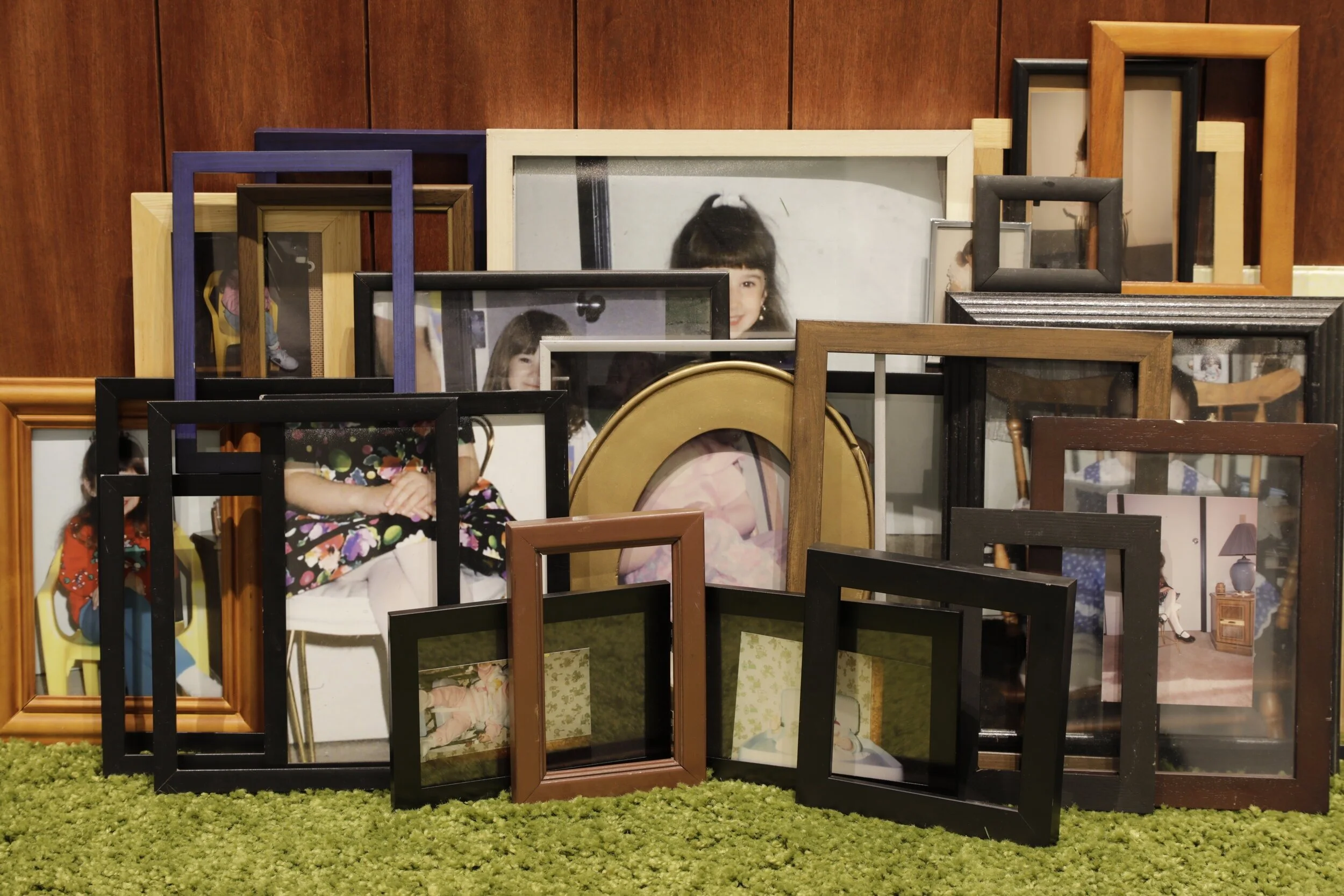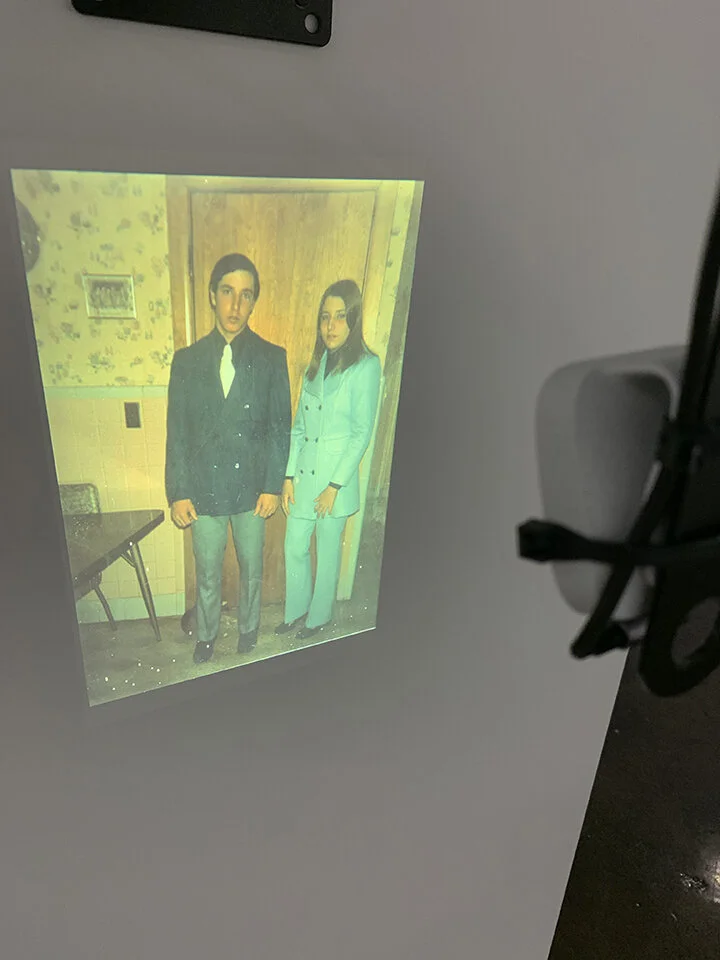Performance, Failure, and The Machine Takeover of the Family Album
is an installation project that responds to the relationship between rituals of family photography and evolving methodologies of picture-taking and display. Gathering framed objects, a 35mm slide projection, and digital images selected by Google’s AI-driven Clips device, the resulting installations address the inevitable failures—both technical and conceptual—of cameras to accurately document a family unit over time. Restaging and re-presenting images from three generations in my own family, I inevitably create a multi-format archive that insists even the most banal family photograph is by its nature, performative.
What once was described by scholar Gillian Rose as a human social norm, the “doing of family photography,” has become increasingly more reliant upon the technologies of facial recognition, surveillance, computational imaging, and artificial intelligence. Through considered installations, I highlight the global shift from a privately kept, analogue overview of the family tableau directed by the family unit itself, to the present form: a public performance for everyone, everywhere, captured through data driven imagery, viewed and stored by way of Silicon Valley.
I explored the use of the Google Clips camera as an example of a millennial tool marketed in a similar manner to what Kodak did to condition the public with regard to capturing, storing, and sharing of family photographs. Much like Kodak’s campaign slogan, “You press the button, we do the rest,” which was marketed heavily and particularly to domestic women throughout the 20th century, Clips aims to remove the inherent hassle of photography for the 21st century family, and allows for real-time sharing through Google’s server space. Released in late 2017, the Clips camera utilizes artificial intelligence, dubbed “Moment IQ,” along with facial recognition software capable of registering a memory for familiar faces over time, in order to operate and organize images independently of the camera’s operator.
Displaying and sharing photographs (in the form of physical objects) became a universal tool for activating a sense of nostalgia. As these acts of responsibility for preserving desired memory (candid or staged) are stripped from us and replaced by algorithmic structures within a “pull-to-refresh” society, I suspect that generations of families moving forward will lose touch with the sentiment of nostalgia and rely upon a post-nostalgia feeling built upon a constant seeking of real-time documentation. Since the new norm is to post the image to social media, say Instagram for example, the picture of our family vacation will no longer situate itself in on a horizontal plane within a physical album, but rather a vertical narrative between #ads from Influencers selling detox Tea, and the sushi dinner that Dwayne “The Rock” Johnson shares as his “Sunday Sushi Train” cheat meal. Pull-to-refresh and you’ll have lost your family vacation image to a sea of new images, but you’ll have satisfied your post-nostalgia rush.
The vernacular acts as no photographs other; no matter if formed in grain or pixel, nor by man or machine. The failure of the family photograph is in its’ illusion as document, and only until it is read for its’ narration of performance as created by family for family, can we begin to address the active consent to loss. In a stream of infinite images of everything imaginable, each comprised of its’ own encrypted set of machine-made data, the family photograph becomes but a speck of code, constantly evolving within a Silicon-curated future.





